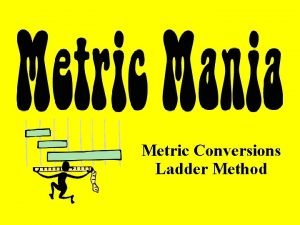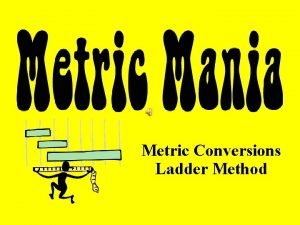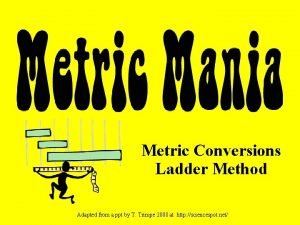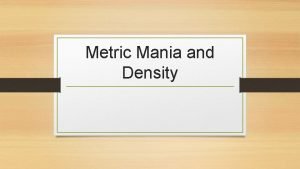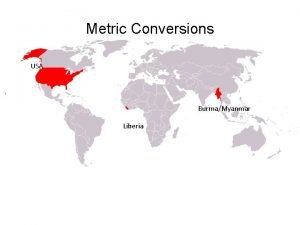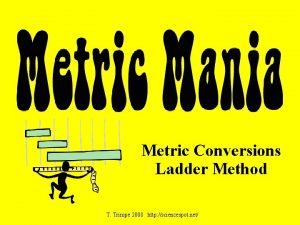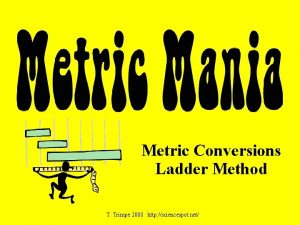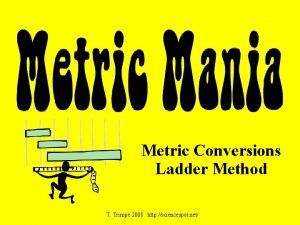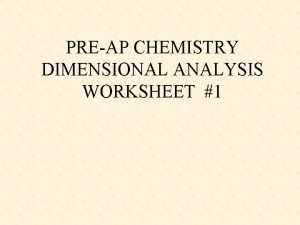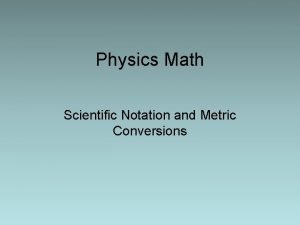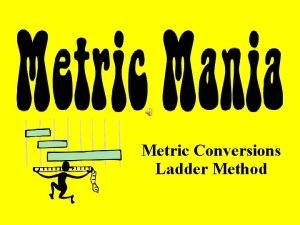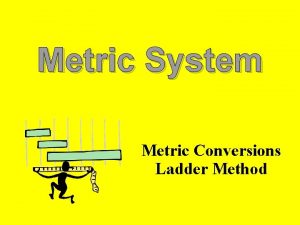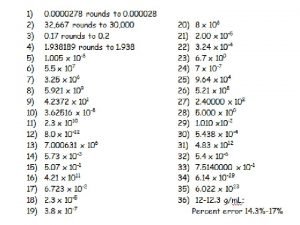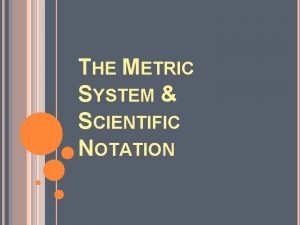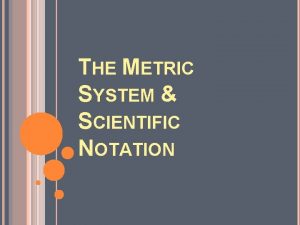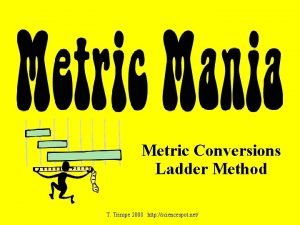Metric Conversions Ladder Method Ladder Method 1 2















- Slides: 15

Metric Conversions Ladder Method

Ladder Method 1 2 KILO 1000 Units HECTO 100 Units 3 DEKA 10 Units Meters Liters Grams DECI 0. 1 Unit How do you use the “ladder” method? 1 st – Determine your starting point. 2 nd – Count the “jumps” to your ending point. 3 rd – Move the decimal the same number of jumps in the same direction. CENTI 0. 01 Unit MILLI 0. 001 Unit 4 km = _____ m Starting Point Ending Point How many jumps does it take? 4. __. __. = 4000 m 1 2 3

Conversion Practice Try these conversions using the ladder method. 1000 mg = 1 g 1 L = 1000 m. L 14 km = _______ m 160 cm = _______ mm 109 g = _______ kg 250 m = _______ km Compare using <, >, or =. 56 cm 6 m 7 g 698 mg

Metric Conversion Challenge Write the correct abbreviation for each metric unit. 1) Kilogram _____ 4) Milliliter _____ 7) Kilometer _____ 2) Meter _____ 5) Millimeter _____ 8) Centimeter _____ 3) Gram _____ 6) Liter _____ 9) Milligram _____ Try these conversions, using the ladder method. 10) 2000 mg = _______ g 15) 5 L = _______ m. L 20) 16 cm = _______ mm 11) 104 km = _______ m 16) 198 g = _______ kg 21) 2500 m = _______ km 12) 480 cm = _____ m 17) 75 m. L = _____ L 22) 65 g = _____ mg 13) 5. 6 kg = _____ g 18) 50 cm = _____ m 23) 6. 3 cm = _____ mm 14) 8 mm = _____ cm 19) 5. 6 m = _____ cm 24) 120 mg = _____ g

Compare using <, >, or =. 25) 63 cm 26) 536 cm 6 m 53. 6 dm 27) 5 g 28) 43 mg 508 mg 5 g 29) 1, 500 m. L 30) 3. 6 m 1. 5 L 36 cm

WHY METRICS? It’s easy! Based on the number 10 Once you know the base units (m, L, g) then making larger or smaller only requires moving the decimal. It’s Universal!

LENGTH Find the length of your notesheet at your desk. Begin measurement at 0. Record data as a decimal.

Volume : Find the volume of the block at your desk. How did you do this? ? This is a REGULAR OBJECT. What is a regular object? Straight sides can be measured accurately with ruler.

What’s the volume of your textbook? What units are volume measured in ?

WAIT!! What about an irregular shaped object ? ! How would you find the volume of a marble ?

WATER DISPLACEMENT METHOD -used for irregular shaped objects -Look at the meniscus before and after you place the object in the water.

MENISCUS: the curve of the surface of the liquid in the graduated cylinder.

MASS VS WEIGHT! In scientific contexts, mass refers to the amount of matter in something. Weight: the force experienced by an object due to gravity

DENSITY What is it ? The mass per unit volume So. Oo…. . The formula for density is D= M/ V

TEMPERATURE How would we take the temperature of a liquid in a beaker?
 Ladder metric system
Ladder metric system Metric ladder method
Metric ladder method Conversions using the ladder method
Conversions using the ladder method Metric mania notes
Metric mania notes Metric units
Metric units Take out centi
Take out centi Ladder method metric system
Ladder method metric system Metric prefix ladder
Metric prefix ladder Basic unit ladder
Basic unit ladder Conversion ladder method
Conversion ladder method Dimensional analysis metric conversions
Dimensional analysis metric conversions Write the correct abbreviation for each metric unit meter
Write the correct abbreviation for each metric unit meter Household to metric conversions
Household to metric conversions Metric conversion jeopardy
Metric conversion jeopardy Metric conversion dimensional analysis worksheet
Metric conversion dimensional analysis worksheet Scientific notation and metric conversions
Scientific notation and metric conversions
